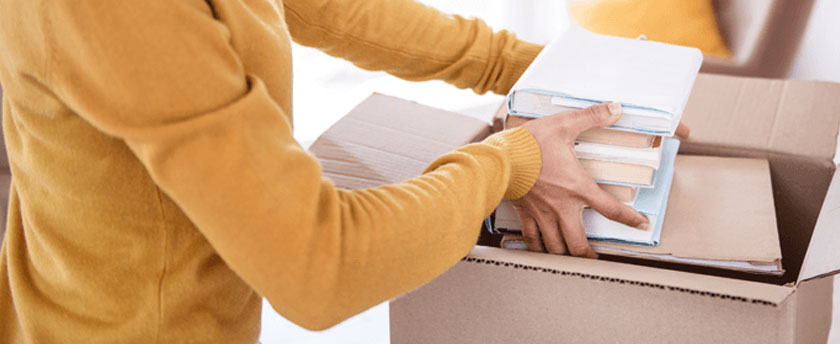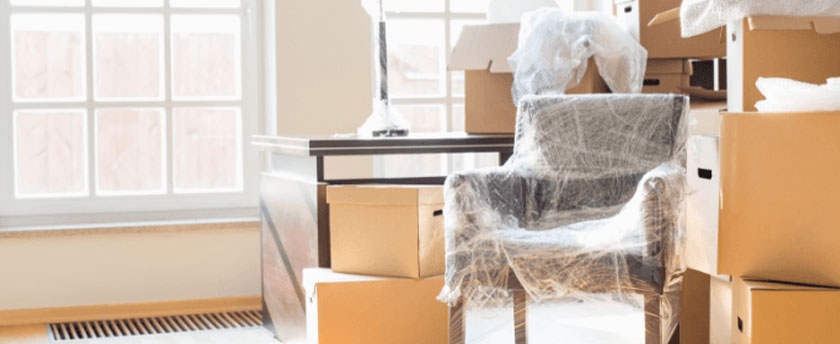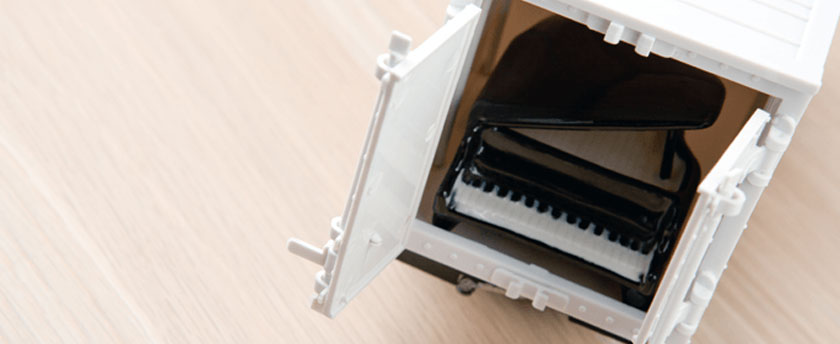Guide to Packaging eBay Goods

Guide to packaging eBay goods for shipment to customers
As an eBay seller, you are probably well aware of the risk of the buyer claiming that items were received in damaged condition, and either returning them with a demand for a refund, or making a Paypal chargeback. Claims like these and the lost revenues that accompany them are probably one of your worst nightmares as a seller – alongside claims that goods were not received at all.
So aside from using a secure signed-for delivery service to prove that your goods were received in the event of a dispute, you are also going to want to make sure that the packaging is good enough for no claim of damage in transit to be credible.
Depending on what it is you’re shipping, there are different forms of packaging recommended.
1. How to package electronic goods such as TV sets, audio equipment and computers

Whether they are new or used, it’s always best to use the original manufacturer’s box including the made-to-measure internal packaging (typically this would be expanded polystyrene) to afford maximum protection against bumps and knocks.
If the original box has been lost, you’ll have to improvise. Source a good-quality double-walled cardboard box that accommodates the whole item comfortably but without being excessively large on any dimension. Then wrap and seal the item thoroughly in at least two layers of bubble wrap. Place the sealed item in the middle of the bottom of the box. Finally, fill the empty space completely with expanded polystyrene beads.
Whatever box you may have used, seal the enclosed package thoroughly with at least two layers of an appropriate grade of tape for the size of package at all joins. For large packages, thick brown parcel tape is usually best. For smaller packages, clear tape may suffice.
2. How to package books, newspapers, magazines and paper collectibles

Paper items such as books are easily damaged in transit. Whether the items you are selling are brand new or of a certain vintage, you will want your customer to receive them in the condition advertised.
Thin paper items such as newspapers, vintage comics, magazines and pamphlets are vulnerable to folding. You should therefore place them flat on the middle of a piece of sturdy cardboard slightly larger than they are to protect them. They will then need to be taped to this. But do not apply tape directly to the item! First, either wrap it in a clear plastic sleeve (preferable for very thin items such as single newspaper cuttings) or wrap it in plain brown paper and seal the wrapping on the outside with tape before taping down the edges to the cardboard backstrip you’ve prepared.
Thicker items will not need as much protection from folding but will need protection from bumps and moisture. If you have just one book, it may be enough to wrap it in a single layer of bubble wrap and seal the bubble wrap parcel in a lightly padded envelope (please note that a lightly padded envelope by itself will not protect your book adequately from serious bumps in transit and may not fully protect it from rain ingress either).
If you have several books, it will probably be necessary to use a sturdy box. In this case, you will still need to internally protect and secure the books, because otherwise they will move around, causing damage to their covers from rubbing and bumping. There are two recommended ways to go about this that are generally effective in preventing damage.
Method 1: Wrap each individual book in brown paper and seal this with tape, before placing all books together, with the largest at the bottom and the smallest at the top, in the box; then fill all the space with loose cuts of bubble wrap, polystyrene beads, and / or scrunched-up newspaper.
Method 2: parcel together size-matched books in securely taped bubble wrap parcels, and place each parcel within the box, before filling any spare space with loose cuts of bubble wrap and / or scrunched-up newspaper.
NB: Method 1 will not protect the contents from rain, so it’s important that you can rely on your postal service not to leave the parcel outside your customer’s property if you don’t seal the individual books in bubble wrap or other plastic.
3. How to package glass, porcelain, ceramic and other fragile decorative items

Such items are inherently fragile. It’s therefore essential that multiple layers of strong bubble wrap are placed around each individual item – two or three are best. All items should then be placed together in a strong double-walled box of suitable size, and the gaps completely filled with polystyrene beads or loose cuts of bubble wrap before it is sealed.
This also applies to paintings and other artwork that have been framed in glass, since the thin glass is easily shattered by knocks.
4. How to package artwork, crafts and non-fragile collectibles

Collectibles made of wood, artwork and craftwork of various kinds may not shatter but can still be damaged or chipped by bumps. You should therefore endeavour to ensure that they are appropriately packaged to absorb the energy of knocks and bumps. Using a sturdy box and filling the space with loose bubble wrap, polystyrene beads or scrunched-up paper is a minimal requirement. Many non-fragile items will also gain added protection from being packaged in a single layer of bubble wrap within the box. Works of art on canvas can be more easily damaged, and for these, internal bubble wrap is practically essential.
5. How to package items of furniture such as chairs, tables, wardrobes and chests of drawers

Furniture is inherently bulky, and probably won’t fit in a box once it has been made up. But you can still take sensible measures to protect it from bumps and rainfall in transit.
Protruding features such as the legs of tables and chairs, and the corners and handles of wardrobes and chests of drawers, should be wrapped in bubble wrap that is then securely taped down, so that in the event of bumps, the shock is absorbed and damage is minimised.
You may also want to cover wooden furniture in clear waterproof plastic to protect it from damage by rainfall during loading and unloading of the delivery vehicle, though this is a tedious operation and will probably be unnecessary in most circumstances.
6. How to package pianos

Pianos are very large and practically impossible to fully enclose, but it would be advisable to attach and seal bubble wrap to the corners of the base to protect it from damage.
7. How to package sensitive industrial machinery and laboratory equipment

Sensitive equipment and machinery should always be packaged in its original boxes if they have been retained. If not, it should at the very least be enclosed in bubble wrap to protect against rain ingress and bumps. Depending on the size of the equipment, it may or may not be possible to place it in a box.
While there is a lot you can do to protect your eBay goods from damage in transit, if you are in any doubts or your items are of significant value, we recommend you leave it to professionals.
Mission Impossible Couriers offer a full professional packaging service at your home or office to give you added insurance and peace of mind against damaged goods claims.
Call us today on 0117 941 2255 to discuss your packaging and shipping needs with the experts!
